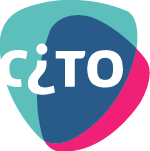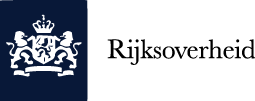THE NETHERLANDS
The Dutch government plays a strong role in quality assurance (setting standards, objectives and exam content).
Over the last decade, testing has expanded and changed in function (from high stakes for students to high stakes for schools)
High levels of school (board) autonomy has at times conflicted with test-based reform
TEST-BASED ACCOUNTABILITY WORLD ATLAS
SAWA IN THE NETHERLANDS
| COUNTRY THE NETHERLANDS | ||
|---|---|---|
| Name of the standardized tests (in primary and low secondary) | At primary level, students must take a test in the final year (group 8/grade 6) known as the end-test or ‘eindtoets.’ There are currently 6 providers of this test: the centrale eindtoets (previously CITO), Route 8, IEP, DIA, CESAN and AMN At the primary level, it is also compulsory that schools use a test-based student monitoring system. By far the most commonly used it the CITO LOVS, which tests students twice every year from their first year of primary school (group 1). It is also common for schools to use a student monitoring system in lower secondary education, however this is not a legal requirement. At secondary level (and up until recently, a requirement of graduation), students must also take a numeracy test (rekentoets). The new coalition government has announced that they will adapt this test, and better integrate numeracy into secondary education. At secondary level, all students must take central exams in their final year. Students must pass these, along with school-based exams in order to graduate. |
|
| Name of the agency in charge of administering the test | CvTE (college van toets en examens) | |
| Grade(s) in which the test is applied | The primary endtest is taken towards the end of the final year of primary school (grade 6 or in the Dutch systemgroup 8) The student monitoring system must be applied at least from group 3 (grade 1) however, most schools use it already from group 1. The numeracy test (Rekentoets) can be taken at any point before graduation The central secondary exams are taken in final year of secondary (this varies depending on the stream) |
|
| Areas of knowledge covered by the test | Primary endtest: Dutch literacy and numeracy (compulsory) world orientation (optional) Rekentoets: numeracy/calculus Central secondary exam: depends on the thematic learning route the student has chosen. |
|
| Year of adoption |
The CITO end-test was first taken by students in 1968. The primary endtest (eindtoets) and the student monitoring system at primary level were made compulsory starting from school year 2014/15. The rekentoets was first introduced in the school year 2014/15. |
|
description
The Dutch system is characterised by its high levels of school autonomy, with government education policy today still very much influenced by the Freedom of Education Act signed over 100 years ago in 1917. Because of this Act, the government is very careful in the amount of involvement it has in schools. The ‘rule of thumb’ is that the government decides the ‘what’ of education (through setting standards, core competencies and test content) and the schools decide the ‘how’.
Decentralisation reforms that began in the late 1980s saw school autonomy further increase. The Schevenings Beraad of 1993 brought with it momentous changes and resulted in the role of school housing being devolved to local government and public education becoming more independent with the majority of municipality-run schools taken over by non-profit organisations very similar to private school boards. It was also the beginning of a ‘lumpsum’ funding system (in which school boards receive a single sum of money to direct to their schools as they see fit). This process was completed in 2006 when the lumpsum funding of primary schools was finalised.
Largely in response to this greater autonomy, accountability has increased over the last decade, along with an increased focus on ´core learning areas.´ In 2014/15 the primary end-test (which has been made by CITO since the late 1960s and traditionally used to objectively stream students into secondary education), was made compulsory, and also became used to measure language and numeracy reference levels. Further, and largely through a change of Inspection framework in 2007, the function of national tests have shifted; from student streaming and qualification, to school (and even by extension, to teacher) accountability.
These developments have also brought up concerns over school freedom (it was argued that the government could not dictate to schools which instruments they must use for testing and monitoring). This led to compromise and these instruments were liberalised (i.e. open to different providers). This has led to issues of comparability (schools taking different end-tests cannot be directly compared). Another element of this compromise was the date of the primary end-test being moved closer to the end of the school year, meaning that students have applied to their secondary school (on the basis of their teacher’s advice) by the time results are published. This has reportedly subjected teachers to greater parental pressure and has resulted in concerns of increased inequality through ‘teacher bias.’ It has also further removed the test from its original function, i.e. the streaming of students.
SPECIFIC ACCOUNTABILITY POLICIES
AND TOOLS ATTACHED TO THE FEDERAL
AND STATE TESTS (MINAS GERAIS):
* LVS data only requested by the Inspectorate if other data signals the school is ‘at risk’
** Below average results compared to schools with similar student compositions
*** This has only happened in one case
INDEX OF SCHOOL AUTONOMY
(OECD, PISA 2015 Database)
NETHERLANDS
OECD average
Source: (OECD, 2015)
PEDAGOGICAL AND MANAGERIAL
SCHOOL AUTONOMY
Managerial autonomy (financial), School autonomy over resource allocation, % of responses
“only principals and teachers” (OECD, PISA 2015, Database)
| Selecting teachers for hire | Firing teachers | Establishing teachers’ starting salaries | Determining teachers’salaries increases | Formulating the school budget | Deciding on budget allocations within the school | |
|---|---|---|---|---|---|---|
| Netherlands (principals) OCED average |
92,9 70,3 |
90,3 57,4 |
48,9 |
63,1 23,4 |
80,6 56,3 |
82,1 75,9 |
| Netherlands (teachers) OCED average |
46,1 9,8 |
1,7 1,3 |
0,0 0,7 |
0,0 1,4 |
3,2 6,3 |
5,5 14,8 |
Source: (OECD, 2015)
PEDAGOGICAL AUTONOMY OVER
CURRICULA AND ASSESSMENTS
% of students in schools whose principals responded that only “principals and/or teachers” are responsible of the following tasks (OECD, PISA 2015 Database).
| Establishing student assessment policies | Choosing which textbooks are used | Determining course content | Deciding which courses are offered | |
|---|---|---|---|---|
| Netherlands (principals) OCED average |
83,6 61,4 |
48,6 31,9 |
20,8 27,1 |
90,9 63,9 |
| Netherlands (teachers) OCED average |
57,5 66 |
86,2 81,8 |
88,7 67,8 |
39,3 |
Source: (OECD, 2015)
legislation

Schevenings Beraad (1993)

Law of the Quality Asssurance System of Education (Ley del Sistema de Aseguramiento de la Calidad de la Educación Parvularia, Básica y Media y su Fiscalización)

The Secondary Education Act (WVO, updated 1998)

The Education Inspection Act (WOT, 2002)
our research team in chile

Hülya
Kosar-Altinyelken
PARTNER
How to cite:
Browes, N. (2018). SAWA World Atlas: The Netherlands, Reforming Schools Globally: A Multi-Scalar Analysis of Autonomy and Accountability Policies in the Education Sector (REFORMED).
Retrieved from: http://www.reformedproject.eu/






